Texas Euphorbias, Subgenus Esula
I finally went through all the Texas Euphorbias including a group that has given me some trouble in the past: subgenus Esula. Here are the important characteristics that I came up with that roughly goes from easiest to separate to most difficult or grouped by similar species. If not mentioned, assume horned glands, smooth fruits, and entire leaves. For terminology information, please read here.
E. lathyris: Leaves clearly opposite, forming an X shaped pattern going up the stem; plants bluish-green.
E. spathulata: Serrated leaves, pleiochasial bracts ovate (broadest near base), dichasial bracts essentially deltoid (broadest at base), no horn-like appendages on the oval glands, and warty fruits
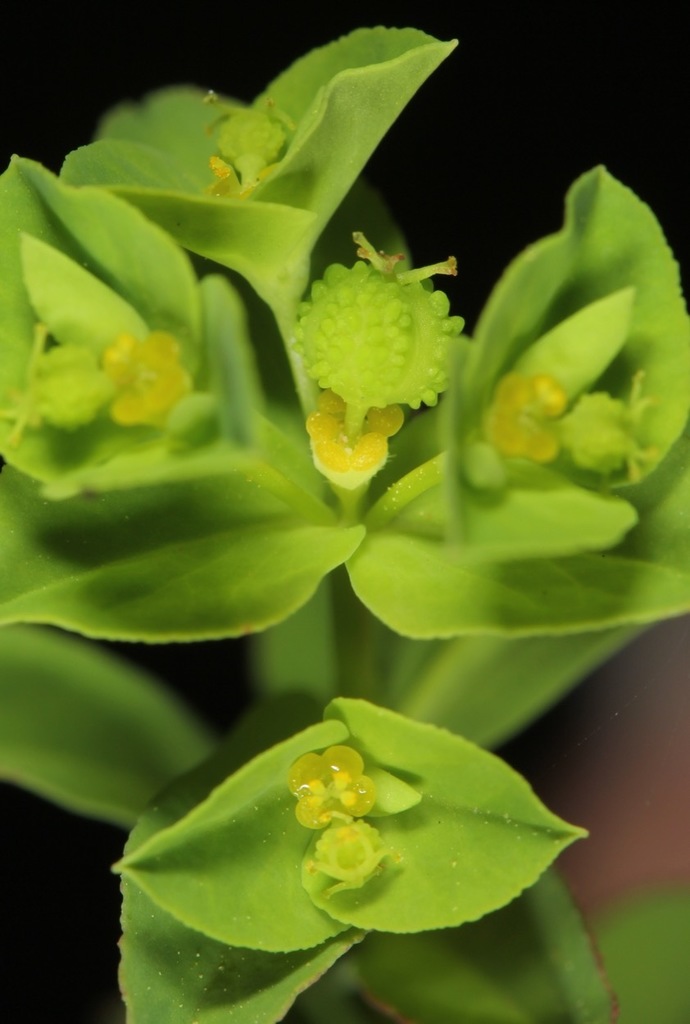
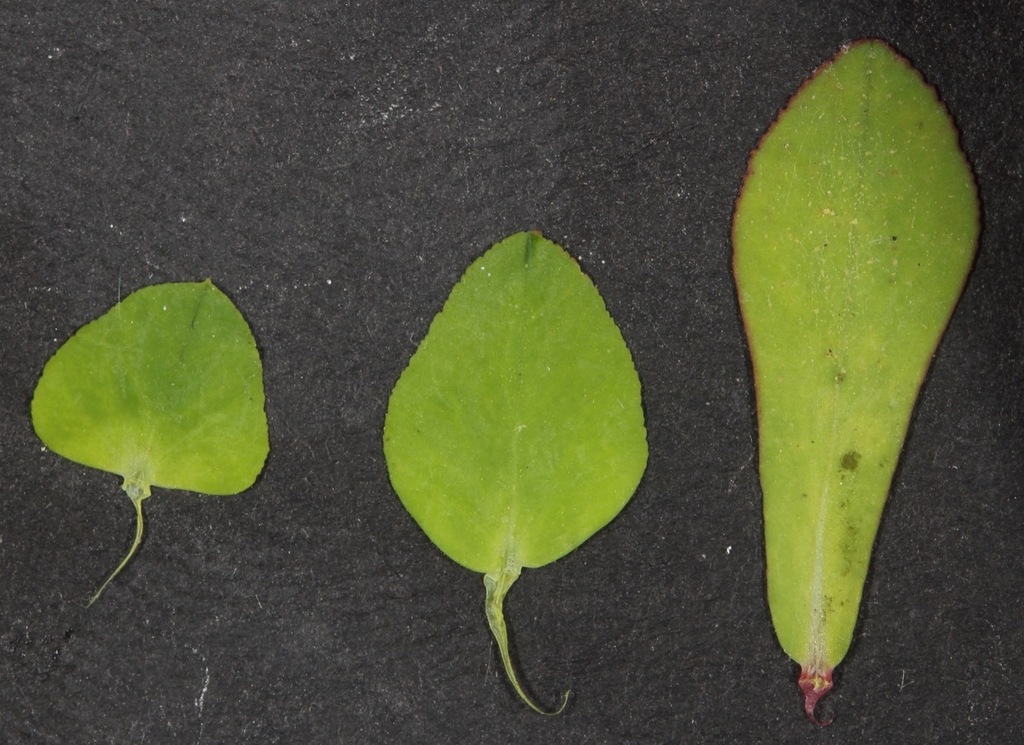
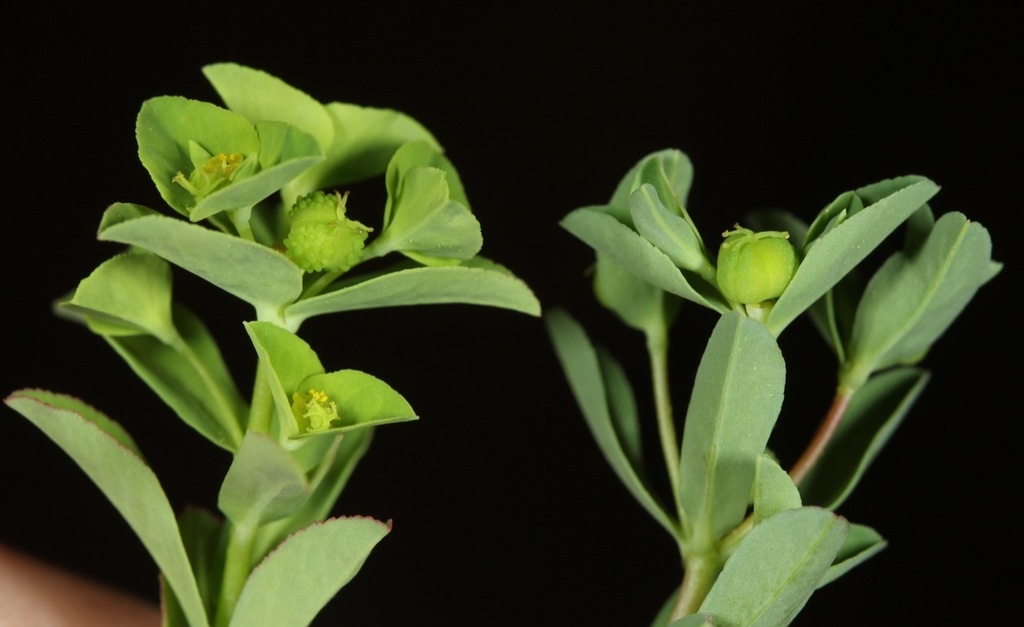
Third photo: E. spathulata: left; E. texana: right. Source observation here
E. texana: Just like E. spathulata but with smooth fruits and elongated, spathulate pleiochasial bracts (broadest at apex), and oval dichasial bracts (broadest near middle).
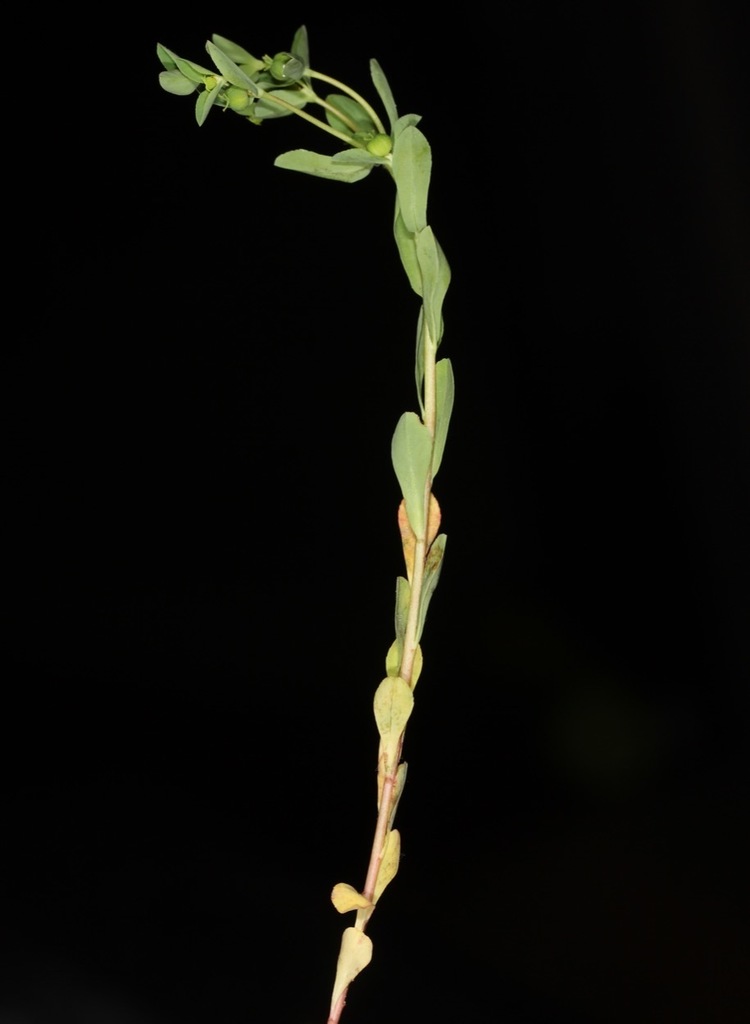
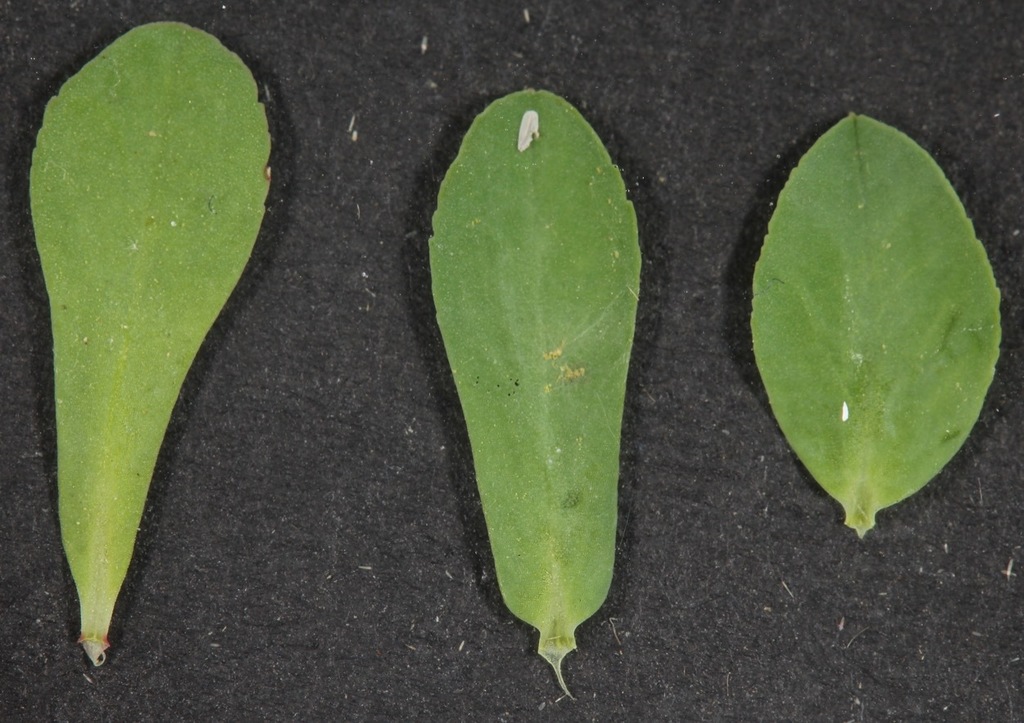
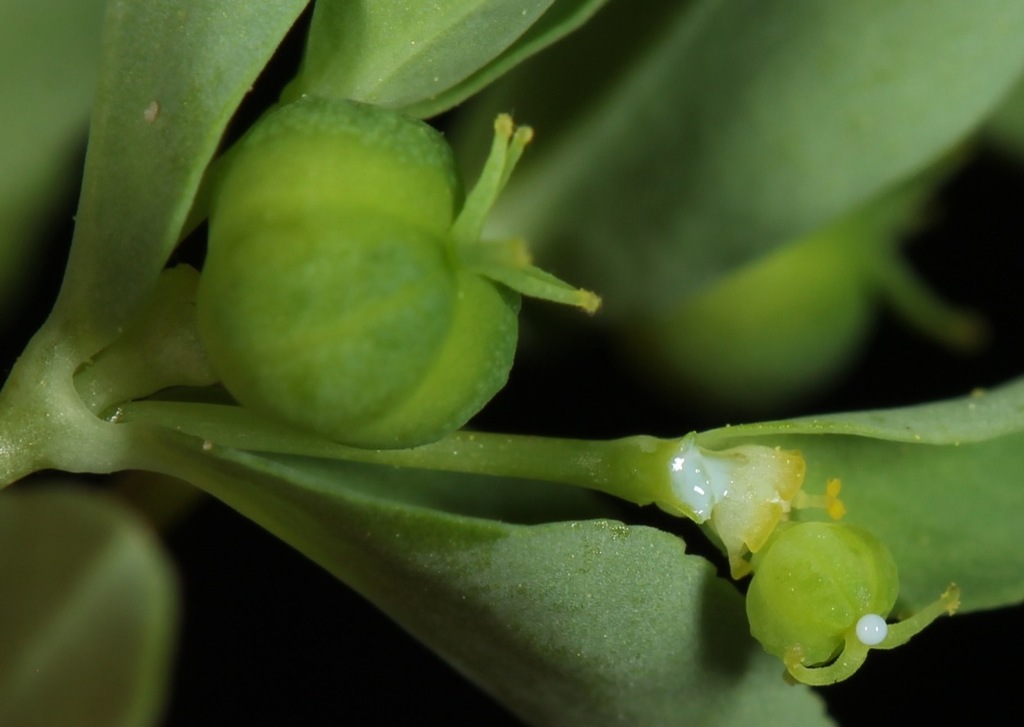
Source observation here
E. helioscopia: Like E. texana but typically with around 5 pleiochasial branches instead of 3 (the main branches of the inflorescence).
E. peplus: Winged fruits.
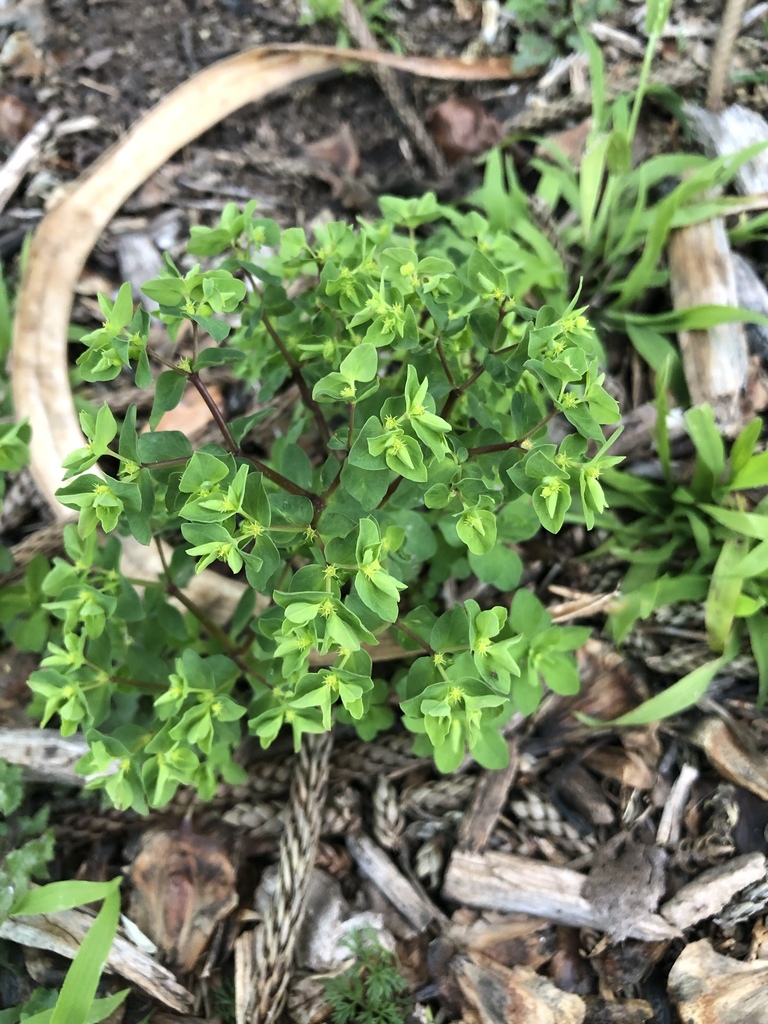
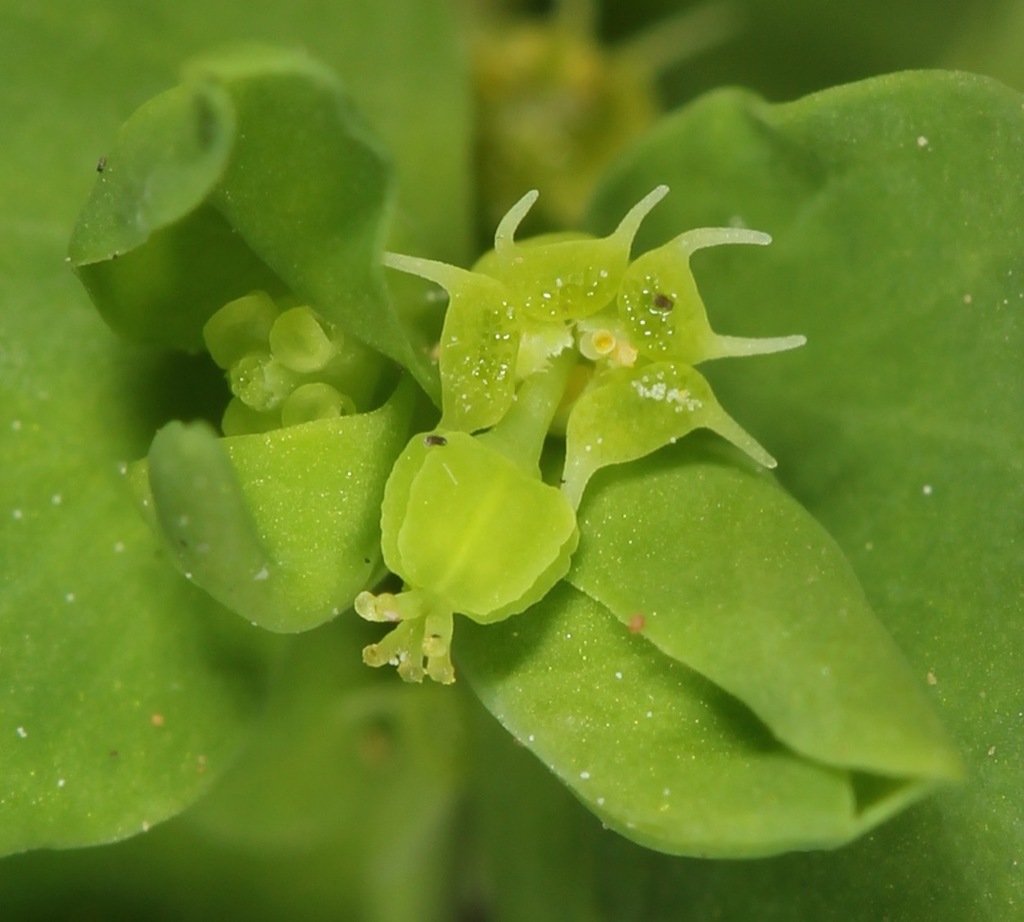
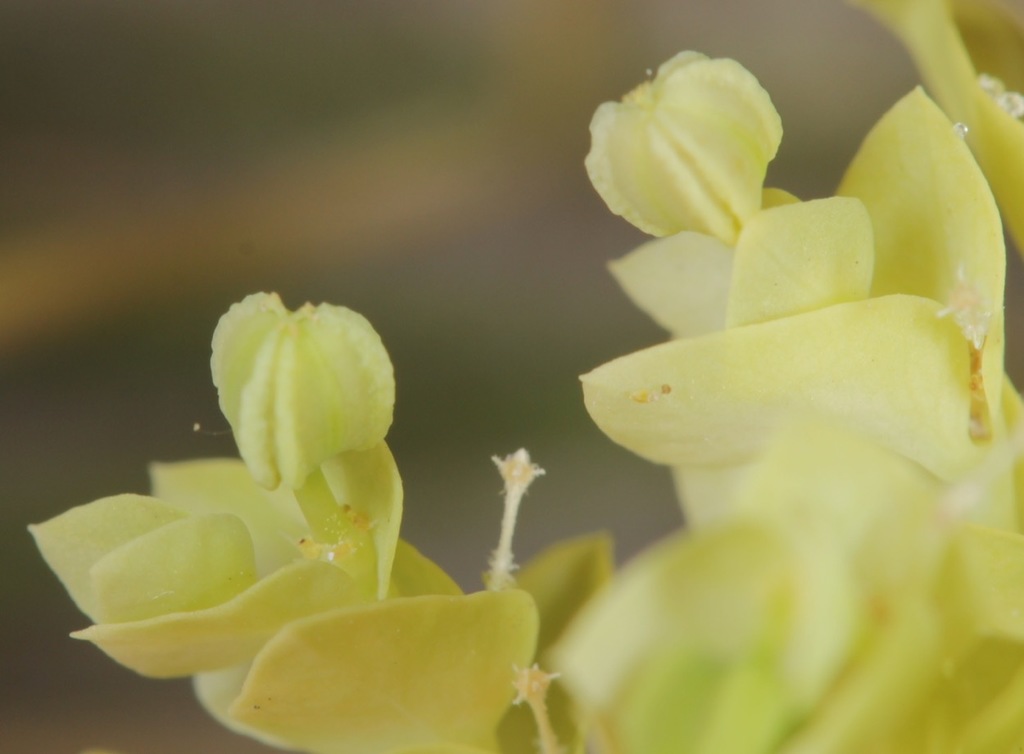
Source observation here and here.
E. roemeriana: Partially fused dichasial bracts (the bracts that are held in pairs), restricted to the Balcones Escarpment in Central Texas (the vicinity of Austin to the Pecos River).
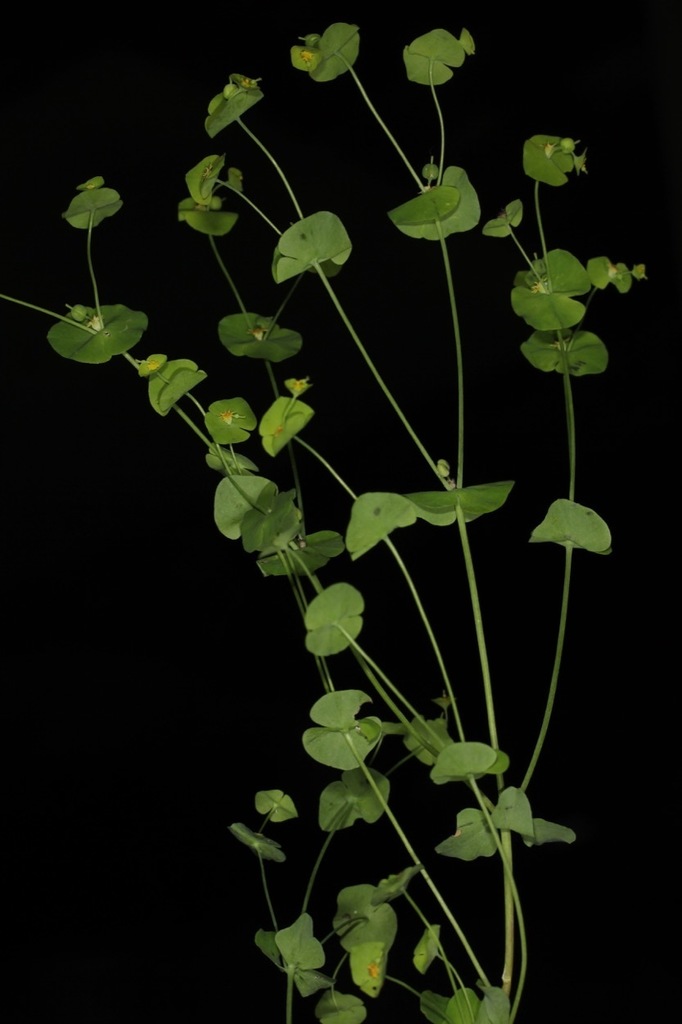

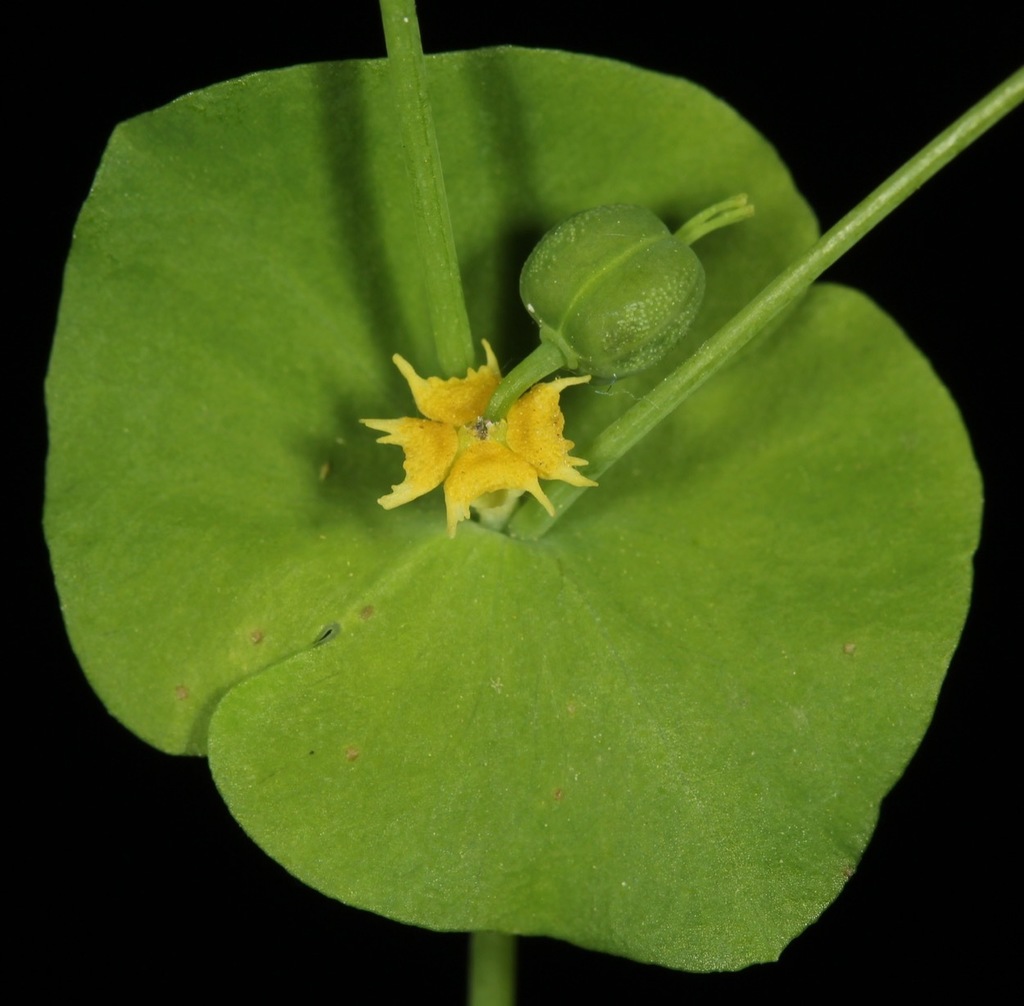
Source observation here
E. ouachitana: Partially fused dichasial bracts (the bracts that are held in pairs); in TX, restricted to the NE corner.
E. brachycera: Large perennial plants usually with acuminate triangular-ovate bracts; main leaves note significantly broader at apex than base, not linear.
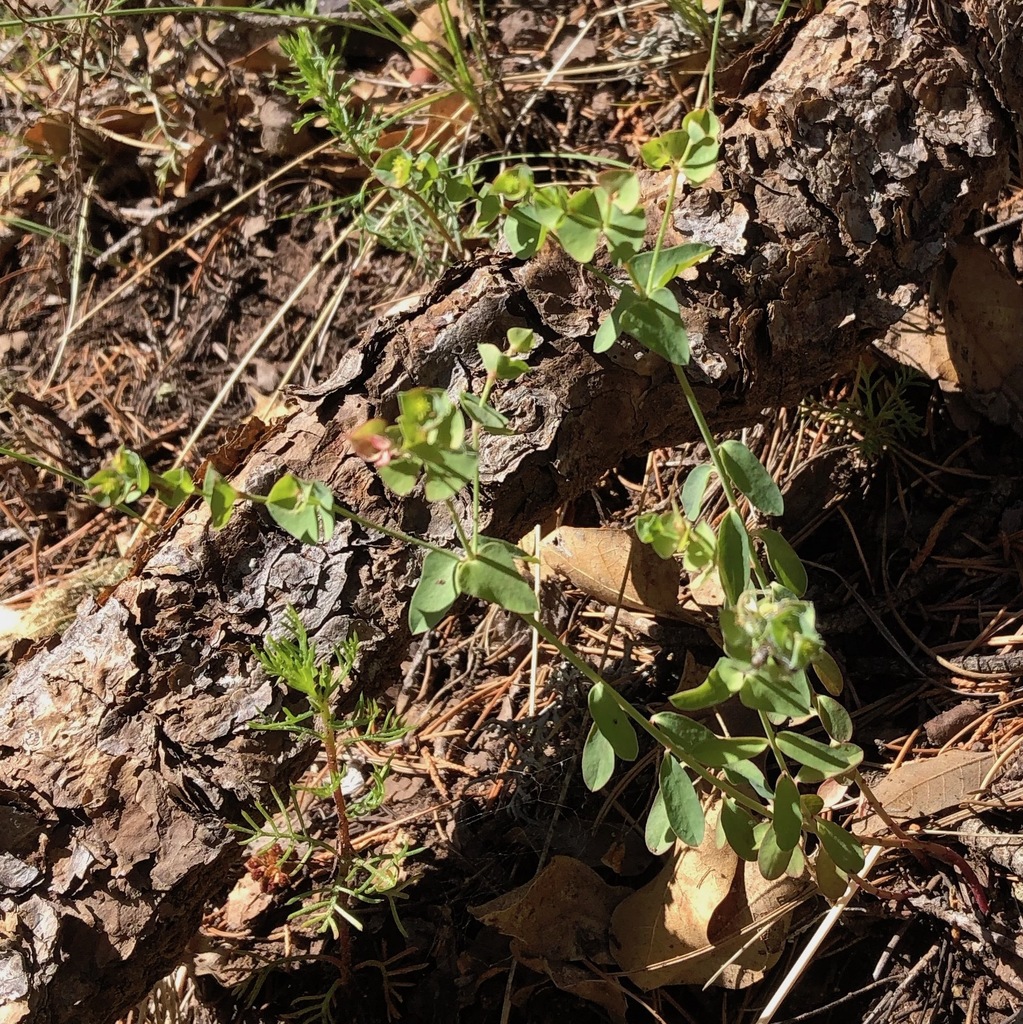
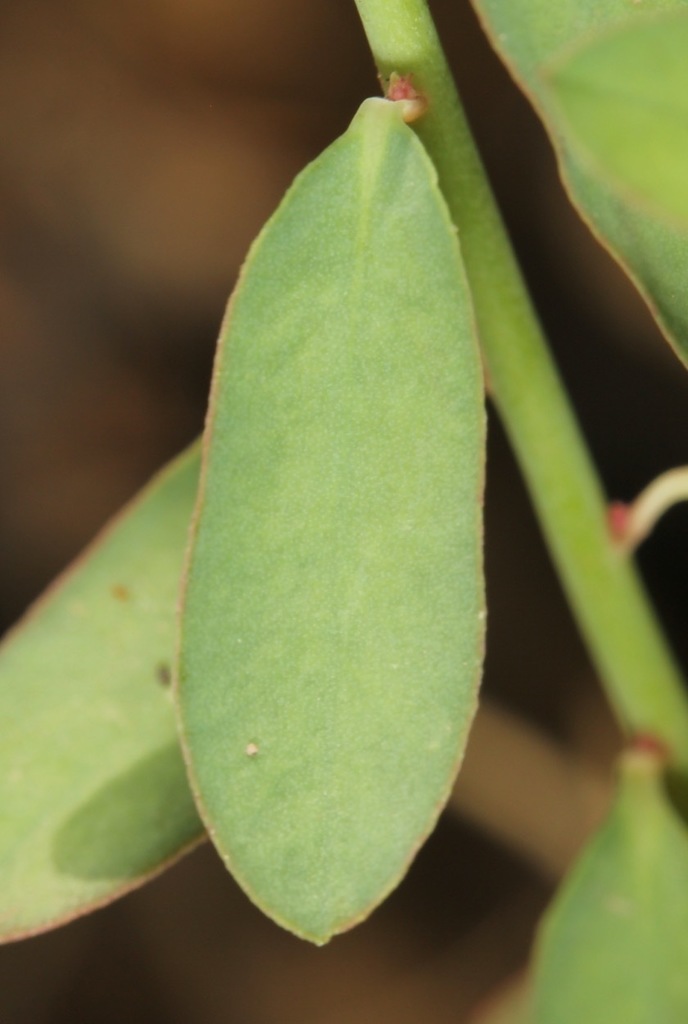


Source observation here
E. peplidion: Dichasial bracts broadly lanceolate to lanceolate with acute apices and non-truncate bases.
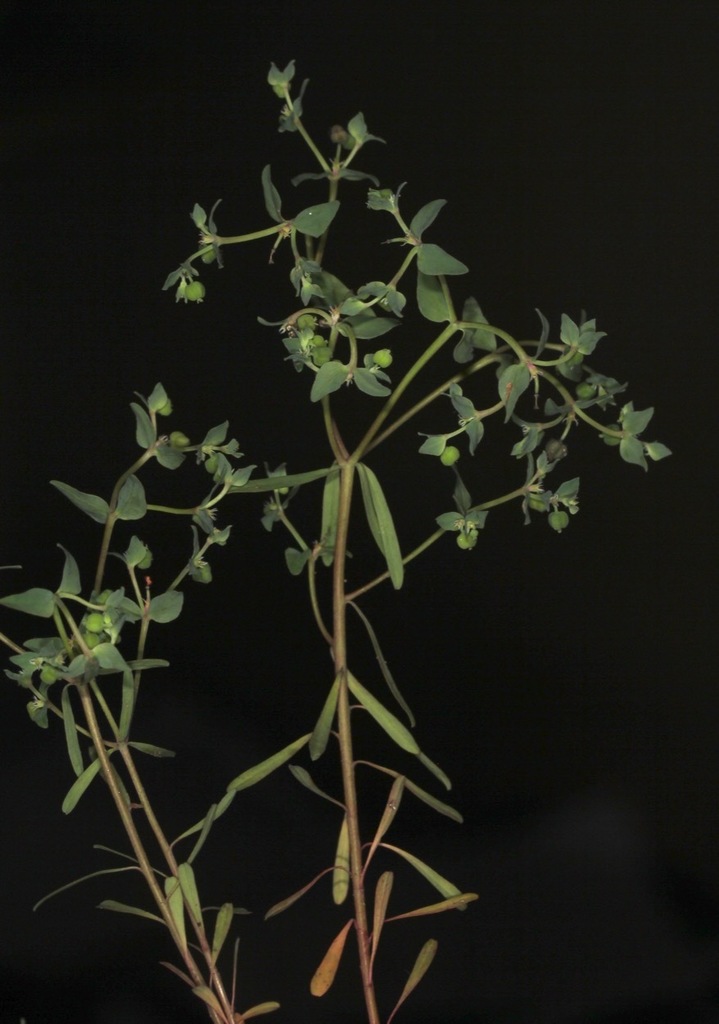

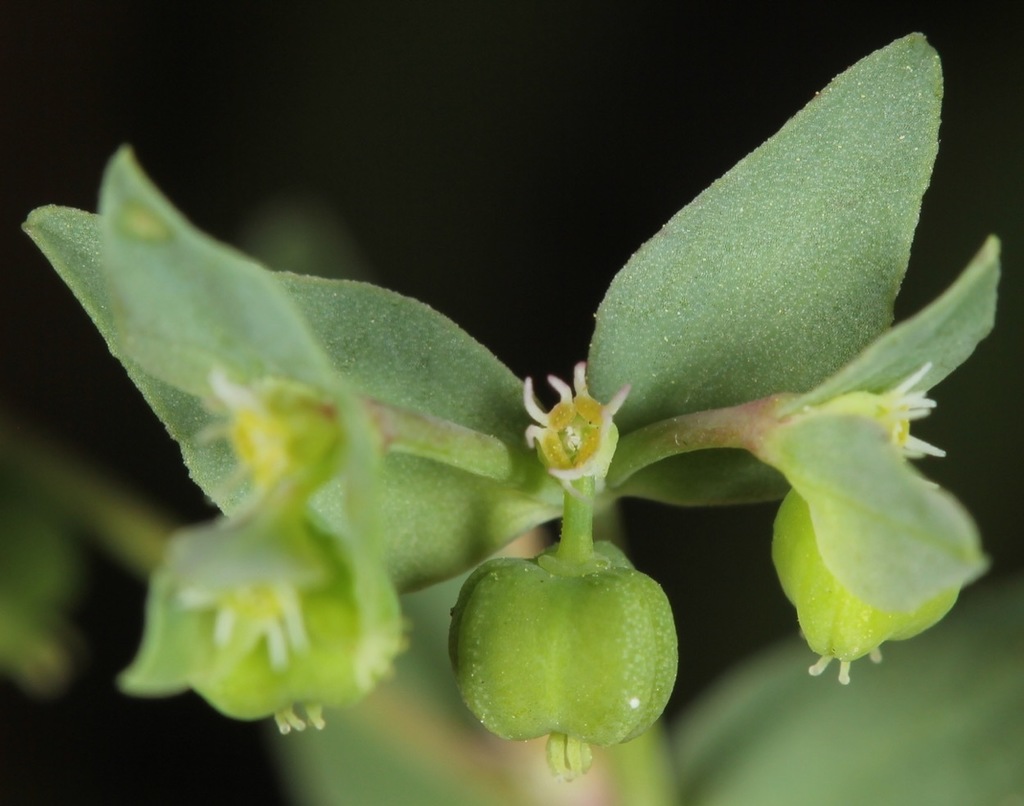
Source observation here
E. longicruris: Dichasial bracts imbricate notably asymmetric with the ventral half extended, generally distinctly reniform, generally strongly ascending, apices rounded, bases cordate and overlapping if spread; fruits with two raised areas along the keels (not wings) similar to E. peplus.
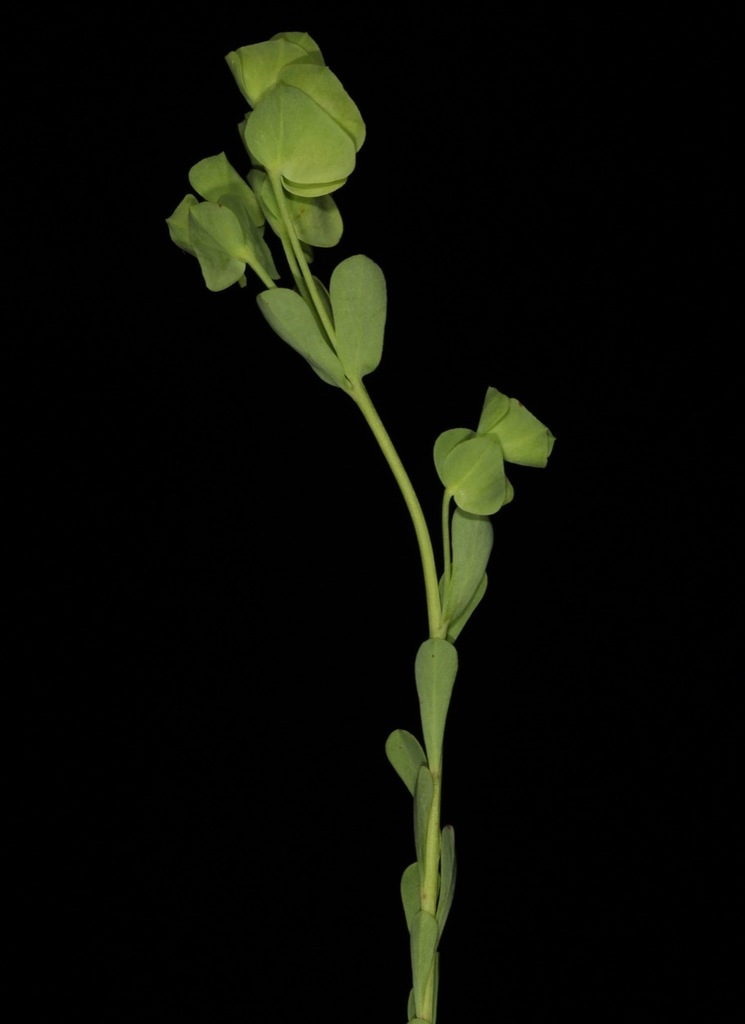
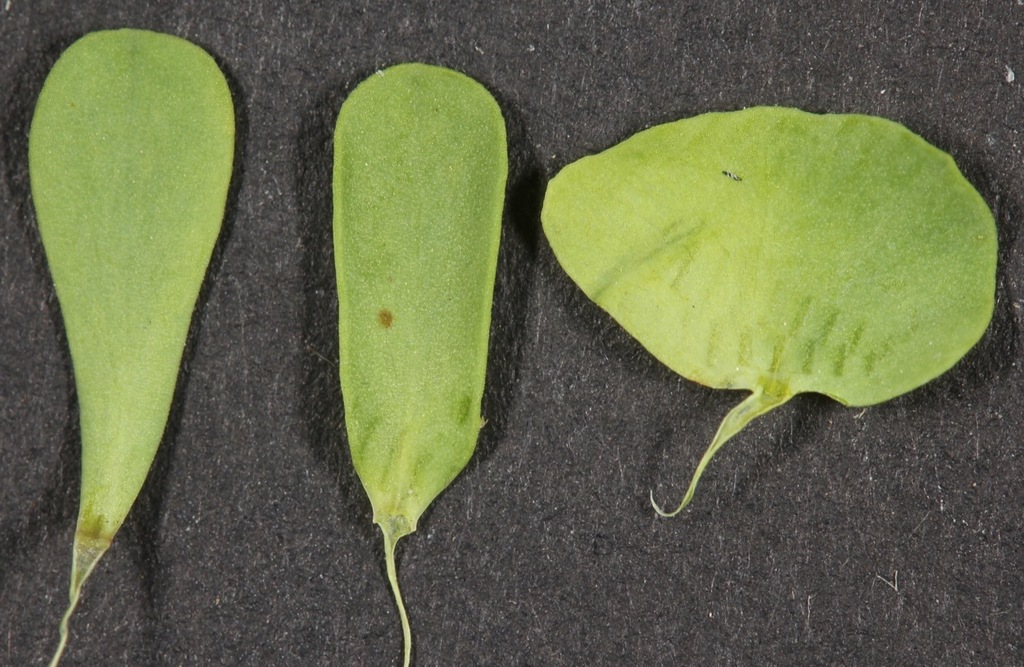

Source observation here
E. austrotexana: Leaves narrow, linear to oblanceolate or narrowly lanceolate.
E. falcata: Leaves acute, dichasial bracts strongly acuminate bases paler than rest of bract.
E. tetrapora: Dichasial bracts essentially symmetric or slightly asymmetric, generally subdeltoid, generally spreading or weakly ascending, apices typically mucronate, bases generally truncate to subcordate; stems erect, unbranched at the base; fruits with two raised areas along the keels (not wings) similar to E. peplus.
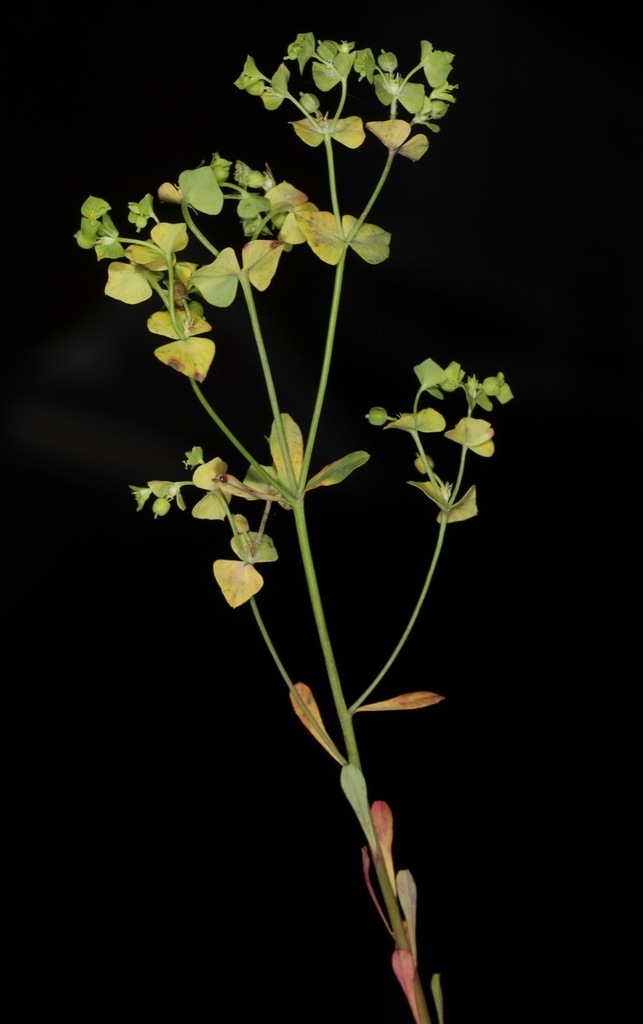
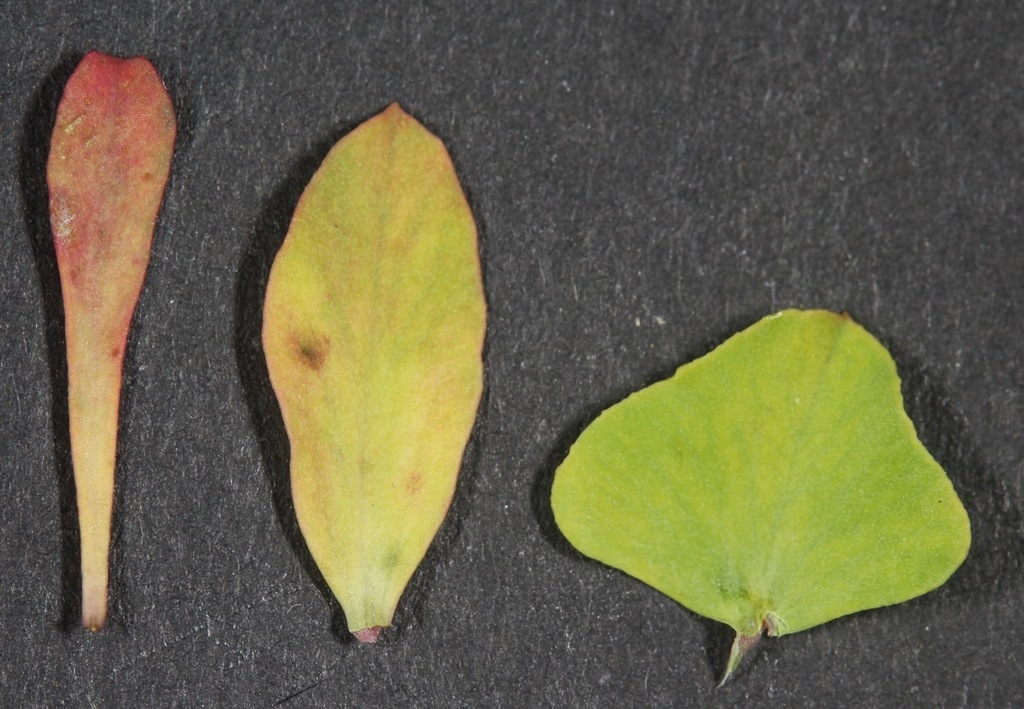
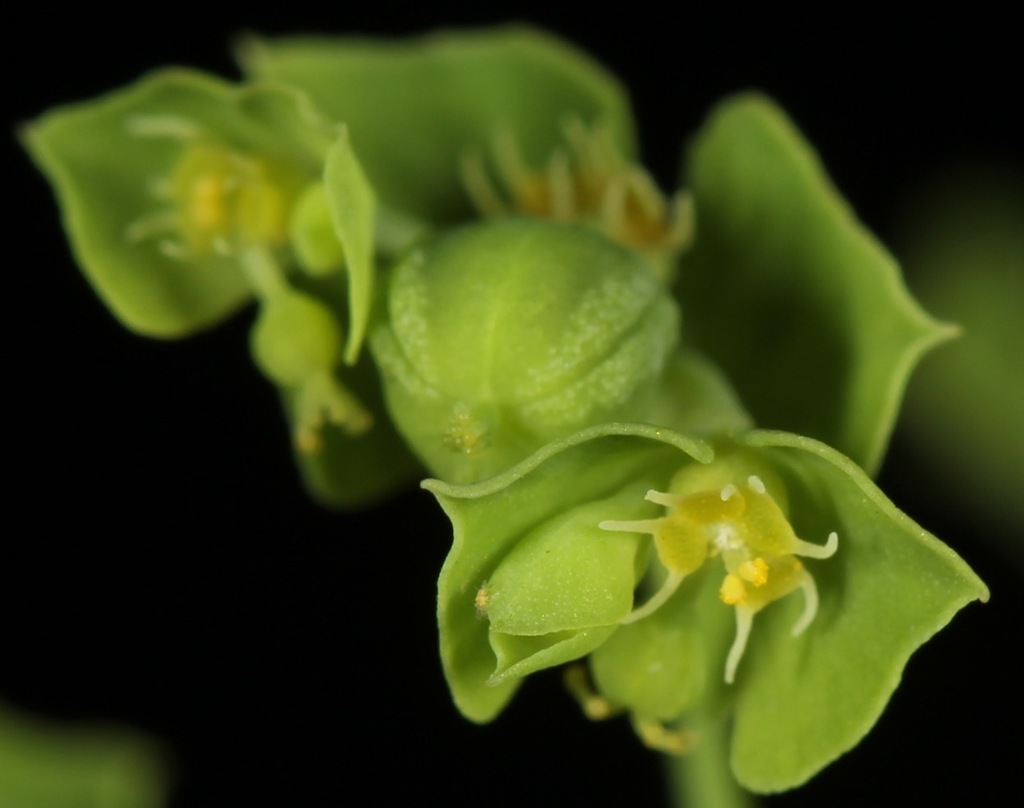
Source observation here
E. helleri: Dichasial bracts mucronate or not, sometimes abruptly narrowing at the middle with a rounded apex; stems ascending, branched at the base; lower leaves often notably emarginate, leaves except dichasial bracts spathulate or oblanceolate.
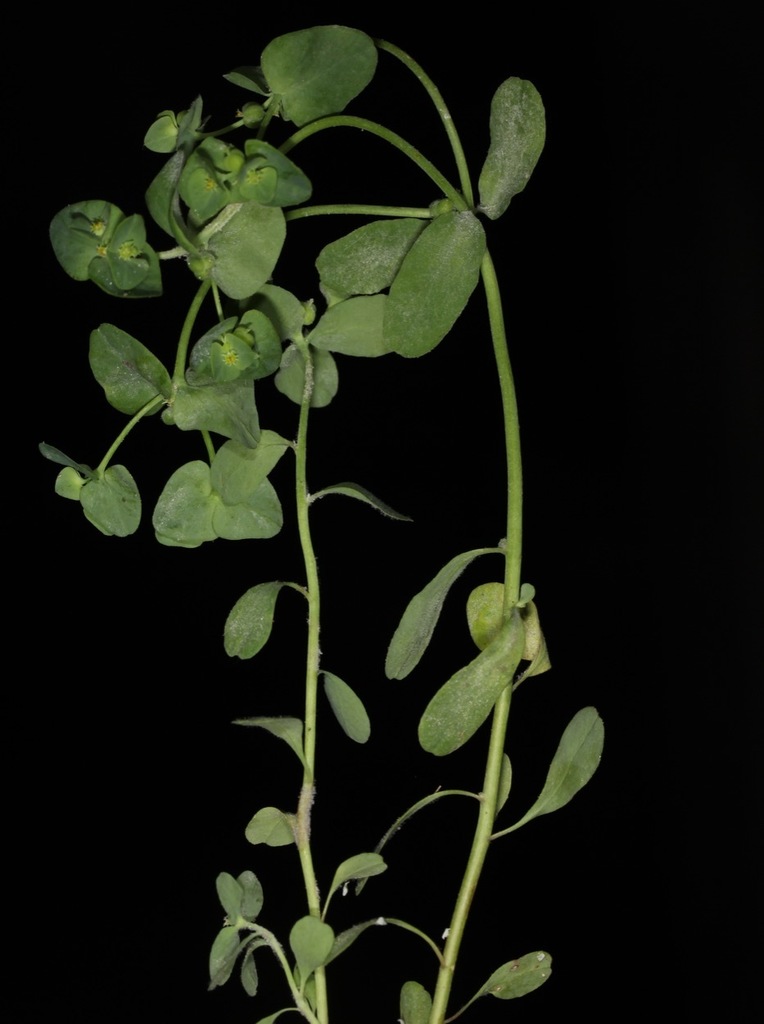
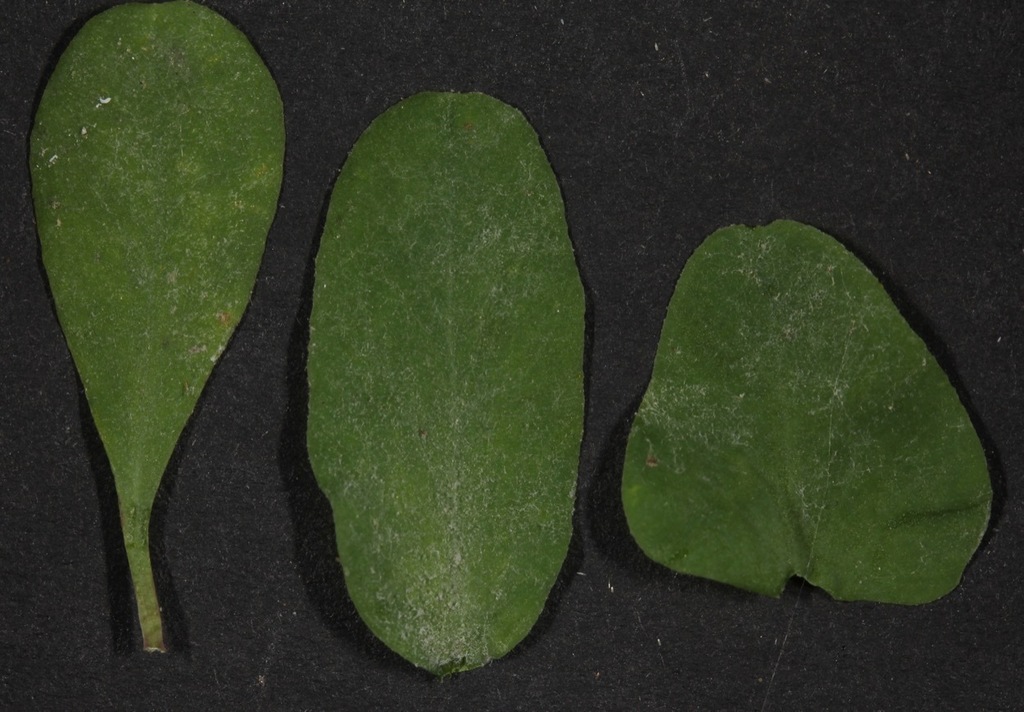
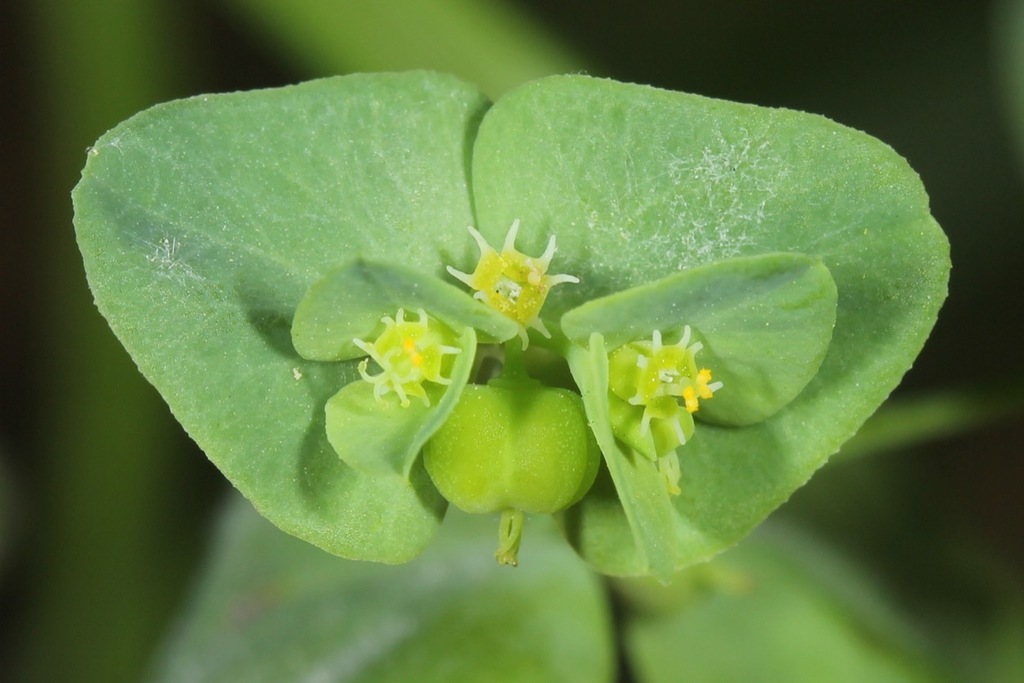
Source observation here
I'd like to note that E. austrotexana has not been observed on iNaturalist and E. lathyris, E. ouachitana, nor E. helioscopia have been observed for Texas if anyone is interested in hunting them down. By the way, I continually update a list of all the species not observed in the US on iNaturalist here.
The records of E. ouachitana and E. falcata are not recorded anywhere else. E. falcata is based on the observation here and E. ouachitana is based on a paper documenting E. commutata for Texas. The taxonomy was revised here and the photos showing E. commutata in Texas are actually of E. ouachitana.
ID notes on E. peplus, E. longicruris, and E. tetrapora: I have had some difficulty distinguishing these three in the past. They key in very different places making it difficult to ascertain the essence of their differences (especially with E. longicruris as distinctive as the imbricate bracts are and how problematic it can be when considering things like etiolation). Since creating this, the distinctions have been updated and should reflect a more consistent understanding of the species.
Comparison of the fruits of E. peplus (left) and E. longicruris (right):

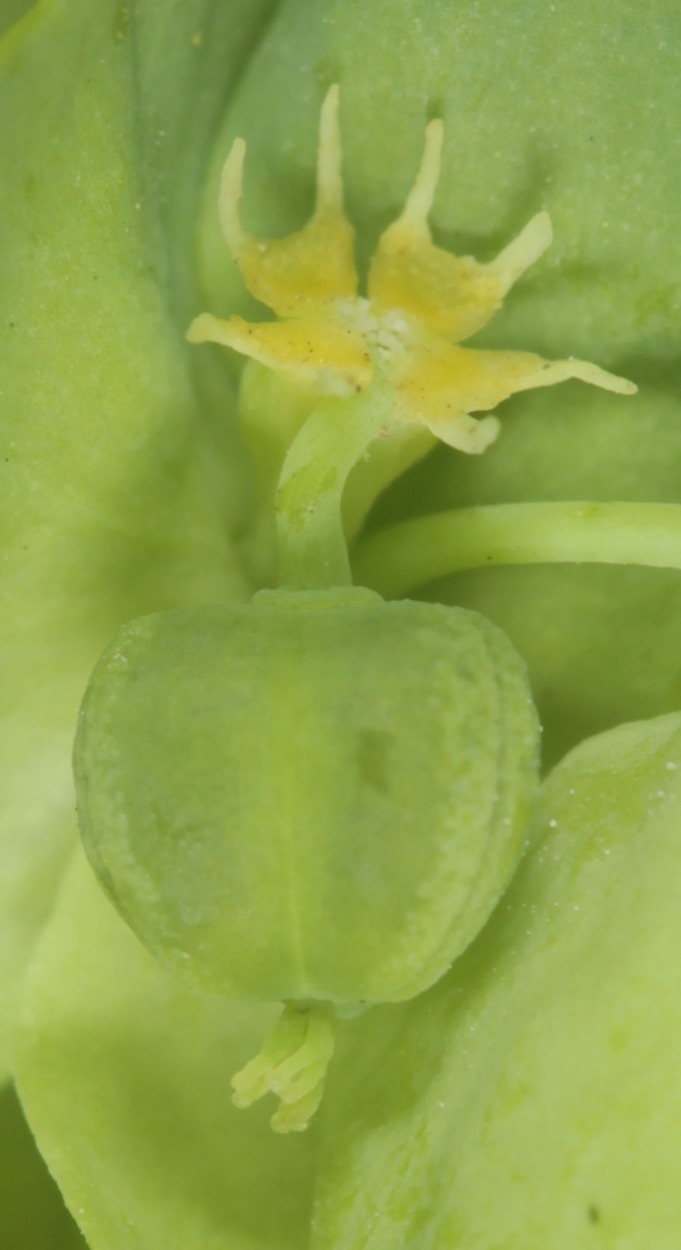
Other annual members of subgenus Esula across the US:
E. commutata: Distributed throughout the Eastern United States as far southwest as Oklahoma, Arkansas, and Louisiana. Potentially expected for Texas.
E. georgiana : Restricted to Georgia. Other annual related species potentially in state: E. spathulata and E. commutata.
E. crenulata: Distjuctly distributed in California, Oregon, Colorado, and New Mexico. Other annual related species potentially in states: E. spathulata.
E. alta: Restricted to Arizona and New Mexico. Other annual related species potentially in states: E. spathulata.
E. platyphyllous: Introduced throughout much of the Eastern United States as far southwest as Tennessee.
E. exigua: Introduced to California, West Virginia, and New York.
References:
Original publication for E. austrotexana




Comentarios
Thank you for your diagnostic efforts on Euphorbia identification and especially for sharing your results with amateurs like me. These plants have certainly been challenging to ID.
But just realized I need to create a concise glossary of the terms used in the descriptions to attach to the info.
No problem.... Part of the learning process, and re-learning process for people like me.
A great exercise, @nathantaylor7583 ! Although dichotomous keys are a time-honored tradition in botany, I am finding that making a trait matrix (rows are characters, columns are species) is very helpful to me to identify the unique combinations of traits for each species in a group, and then I highlight those to make a verbal statement "This is the only species in our area that has xxx and yyy." That seems to be pretty similar to the logic you have followed here.
I love the idea of a "species not observed on iNat" list. There's a motivation!
@janetwright I actually did make an excel document with all the important characteristics. I wish I knew how to upload documents as this is essentially a summary of that. As to the species not observed on iNat list, I was hoping it would be a motivator!
@connlindajo If I knew how to attach photos to journal posts, I'd make a illustrated glossary for the various Euphorbia groups. As it is, I'm limited by the format of the journal posts. I might try to look into it a little today.
To embed, just use a standard html img tag like: [start bracket] img src="https://i.imgur.com/YkMfenY.jpg" width=100% [end bracket]
I guess you have to have the image stored somewhere else online and give a link to that? I'll have to try it, it would certainly make things a bit easier.
Let's see if this works.
There we go. That worked! Thanks for your help @kimberlietx!
I guess it's time to start a glossary.
I did not mean my comment to be criticism in any way... I just have a muddled brain when it deals with things like " Dichasial bracts".
I have joked many times that my next goal in life is to word at least one family taxonomy key in laymen language... using terms understood by folks like me...
Probably a pipe dream.... but when I get caught up, perhaps, I will attempt.
BTW: You have such great photos!!!
Don't worry, I didn't take it as a criticism. Creating a glossary is something I've wanted to do on here for some time, but never really looked into it because I didn't think there was a way to add photos.
I hope the parenthetical information helped enough for you to be able to understand. I much prefer the other groups. They are so much easier to write about as well as identify.
:-)
Thanks for sharing all of this with us. I appreciate your hard work on the project. I'm bookmarking this in hopes that I can come back to it when I need it.
New photos added: E. peplus, E. roemeriana, E. tetrapora, and E. helleri.
I just came across this article, great job Nathan!
Thank you so much for sharing your knowledge.
I'm glad you like it! I hope you will find it useful.
Nice work Nathan- I can post occurrences of missing Texas taxa based on images in my collection that are linked to some of my collections. I've done this for Euphorbia ouachitana recently (only 3 so far) but I have it on my TODO list.
It's no wonder austrotexana hasn't been observed on iNat...it's a very rare and scattered occurrence although I have found one or two sites where it is relatively abundant.
The distinctions between those texas three you mention are not that difficult if you've seen a few specimens but to make matters more confusing, E. longicruris doesn't always have the strongly erect bracts--especially in Arkansas and Oklahoma, but also an old collection from San Antonio area. There's a wonderful site in Texas I know about where Euphorbia helleri, tetrapora, and peplidion all grow in close proximity, Karnes County.
Notes for you.
1) The published occurrences of Euphorbia commutata in Louisiana are misidentified material of one of the introduced species that were specimens misidentified a long time ago by Mike Huft (not a knock on him, he didn't specialize in the Tithymaloids, and he's really good with Euphorbias in general). Suffice to say, I've never seen a collection from there.
2) There is at least one documented occurrence of Euphorbia exigua in Texas. I annotated a specimen as such a long time ago but haven't been able to turn up the data. I thought it was at TAMU or TAES but they assure me no such exists. The late Billie Turner, in a Phytologia--I'm sure you've seen this--incorrectly identified Euphorbia austrotexana var. carrii as Euphorbia exigua. There's a specimen in the museum in Corpus Christi--that houses the collections of Fred Jones--that looks like Euphorbia exigua but they will not loan material so I couldn't make a definitive identification. I mentioned this specimen Jones 2925 in my new species paper from 2013 in JBRIT, as a potential earliest record of Euphorbia austrotexana.
Many thanks! I probably need to review and update this as it's been a couple of years since I last looked at this post (especially E. austrotexana where I was having difficulty IDing without seeds at the time). Let me know if you notice any errors. You know the group far better than I. I also appreciate all the comments on the other observations for this group. I've never had the best grasp on distinguishing E. commutata from E. ouachitana from photos.
Any filling out of the records on iNaturalist would be wonderful! Remarkably, I think the only native subg. Esula species we're missing for Texas are E. austrotexana var. carrii and E. ouachitana (E. austrotexana var. austrotexana was observed just this year if I got the ID right: https://www.inaturalist.org/observations/73142191). You might also be interested in the list of species not observed on iNat for the US. I haven't gotten around to curating the Hawaiian species, so that part is in serious need of updating but the rest should be up to date. Also, I don't remember if I ever shared my list of journal post ID resources on iNaturalist yet. You're welcome to look through any of those too!
Agregar un comentario